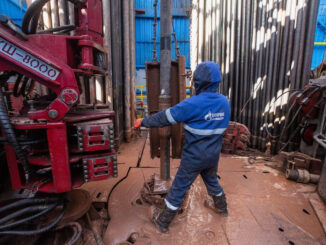
- While demand for fossil fuels remains high and is climbing, investment in oil and gas projects around the world is worryingly low.
- The average global decline rate of oilfields is around 6%, which means oil and gas companies have to invest in new projects simply to maintain production levels.
- Disruptions in Russian oil and gas supplies have highlighted how vulnerable the global energy system is, and prioritizing sustainability over energy security could be a real problem in the future.
Despite high oil prices sending energy company profits soaring over the last year, little of those profits have been reinvested in the oil and gas business. As oil and gas companies acknowledge the inevitability of an energy transition in the future, many are pumping funds into their clean energy business and returning money to shareholders. However, energy experts are concerned that underinvestment in oil and gas could threaten the world’s energy security at a time when the demand for fossil fuels is high and climbing.
The CEO of Saudi Arabia’s oil giant Saudi Aramco, Amin Nasser, told media sources this month that “A persistent underinvestment in oil upstream and even downstream is still there. The latest report from the IEA talks about a demand of 101.7 million barrels — going from 100 million barrels in 2022 to almost 2 million barrels more with China opening up and the aviation industry,” which has not yet returned to pre-Covid levels.
Nasser explained, “There is a lot of potential for growth in aviation,” adding, “And with China opening up and the lack of investment, there is definitely a concern in the mid-to-long term in terms of making sure there is adequate supplies in the market.” He also suggested that while substantial U.S. fuel supplies have supported a fall in oil prices, the slowing of drilling activities could threaten the future supply.
Nasser is the latest of several energy experts to state their concern about underinvestment in the industry. Upstream spending has fallen from around $700 billion in 2014 to between $370 to $400 billion today. While this reflects the expansion of the energy industry to include alternative cleaner forms of energy and a gradual move away from fossil fuels, this is very low considering the continued high demand for oil and gas.
There is also a concern about the ongoing reliance on mature oil fields, which will eventually dry up. The average global decline rate of oilfields is around 6%, meaning companies need to offset their production rate to ensure the intended output. One way to address this is to invest in exploration and development in other oil regions to establish new projects. But with many companies unwilling to invest in new operations that could take decades to get off the ground, the world may have to eventually face an undersupply of oil and gas.
The issue of underinvestment was addressed last year at the Abu Dhabi International Petroleum Exhibition & Conference (ADIPEC), where experts discussed the balance between energy security and sustainability. Many industry leaders highlighted the concern that energy security had been seemingly sacrificed by some for sustainability, resulting in significant underinvestment in oil and gas. Many at the conference viewed the underinvestment as reckless, suggesting many firms have followed policymakers and public sentiment that have been pushing a premature energy transition.
With energy security at the center of the discussion, particularly following the Russian invasion of Ukraine and subsequent sanctions on Russian energy, the ADIPEC debated whether the move away from oil and gas is coming too soon, with many renewable energy projects still in the nascent stage and a potential gap between supply and demand of both fossil fuels and green alternatives. Industry leaders at ADIPEC determined that the persistent and severe underinvestment in energy supply, driven by pressure from governments, activists, investors, and banks, has been a major stimulus for the current energy crisis and represents a huge threat to global energy security.
This may come as a shock to many in the wake of a year of high profits for oil and gas companies. It seemed inevitable that energy firms would pump funds back into operations to ensure the future supply. However, with greater pressures to decarbonize and policies encouraging greater investment in green energy – with several tax cuts and incentives to push this agenda, many oil and gas firms have chosen to invest their money elsewhere.
Research by JP Morgan predicts a $400 billion oil underspend to 2030. And while much of this spending will, instead, go towards non-fossil fuels, the firm’s research demonstrates that neither oil and gas nor alternative energy will grow at the rate needed to meet the growing global demand, resulting in more energy crises in the coming years. Focusing on the fossil fuels underspend, Christyan Malek, JP Morgan’s Global Head of Energy Strategy stated, “In contrast with renewables, the oil industry is comparatively starved of capital but with an abundance of projects and potential supply to be tapped into.” He added that due to the anticipated high demand over the next decade, “oil is really where we see the greatest need for incremental investment, both in sustaining the existing production base, as well as growing it, as we see 2030 demand 7.1 million bpd above 2019 levels, with current spending levels implying a 700,000-bpd average gap to 2030.”
Despite high profits, the ongoing high demand for oil and gas, and the current energy crisis – which has revealed severe supply shortages when Russian energy is removed – there continues to be significant underinvestment in fossil fuels. While this could be seen as positive for the green transition, experts fear that there will not be enough green energy to fill the gap in supply and demand by the time that fossil fuel projects wane, resulting in greater energy insecurity and more energy crises in the future.



